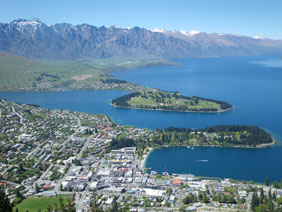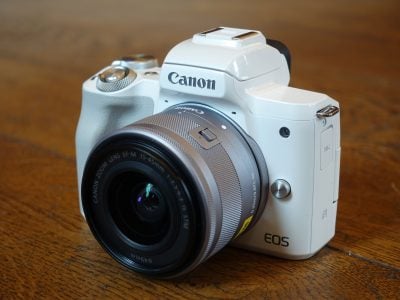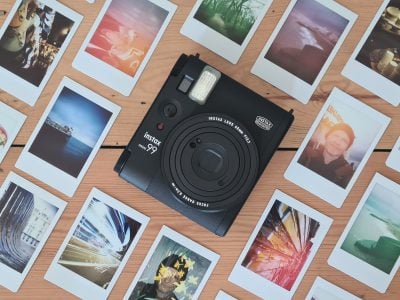Pentax W60
-
-
Written by Gordon Laing
Quality
Outdoor resolution – Pentax W60 vs Olympus 1050SW vs Canon 870IS / SD 880IS
Pentax Optio W60 |
Olympus
µ
 1050SW / Stylus 1050SW |
Canon IXUS 870IS / SD 880IS | ||
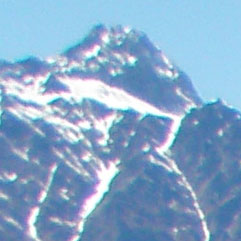 |
 | |||
f4.6, 50 ISO |
f3.5, 80 ISO |
f6.3, 80 ISO | ||
 |
 |
 | ||
f4.6, 50 ISO |
f3.5, 80 ISO |
f6.3, 80 ISO | ||
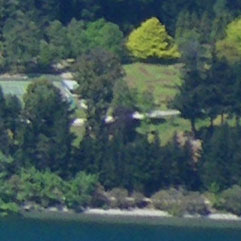 |
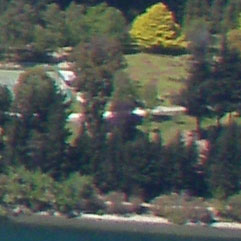 |
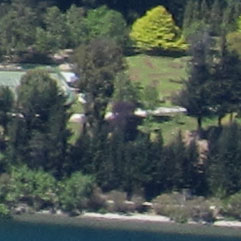 | ||
f4.6, 50 ISO |
f3.5, 80 ISO |
f6.3, 80 ISO | ||
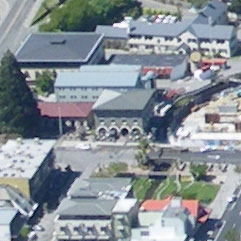 |
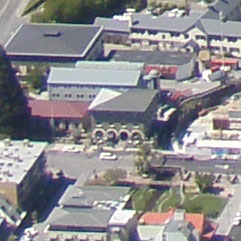 |
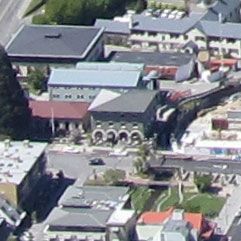 | ||
f4.6, 50 ISO |
f3.5, 80 ISO |
f6.3, 80 ISO |
 |
|
The image above was taken with the Pentax Optio W60 at a sensitivity of 50 ISO, and the lens set to 6mm f4.6; the original ***10M JPEG file measured 3.33MB. The crops are taken from the upper left, centre, lower right and left of centre, and are presented here at 100%.
Note: the W60’s crops show a slightly larger area due to its lens zoom increments not exactly matching the coverage of the other cameras on test here; the closest match was with a slightly wider focal length, which means there’s subsequently a little less detail resolved as a result. We were able to compensate for this on the second results page by adjusting each camera’s distance where necessary.
In the first row of crops of the mountain ridge taken from the upper left corner, the W60’s output is impressively bereft of coloured fringing, especially compared to the Olympus 1050SW. This may be down to superior optics, lower sensor blooming, or digital removal, but most will prefer a lack of fringing by any means.
In the second row of crops, there’s a little less fine detail, partly down to the slightly wider coverage used for this shot, but even then there’s a lack of crispness compared to the Canon sample. This general softness continues onto the third row of crops, where both the W60 and the Olympus are falling behind both the resolution and contrast of the Canon.
This is repeated in the final row of crops, where again the W60 is lacking the punchiness of the Canon. Once again the slightly wider coverage used in this shot is responsible for a slight reduction in fine detail, but there’s also lower contrast on the W60 which you’ll also see on the next results page. While different image processing will be a factor, this effect may also be influenced by its protective lens covering under certain conditions.
But while the W60 is lacking the ultimate punchiness of the Canon here, it’s still a fair result overall, especially for a waterproof model. Now let’s see how they measure-up across their sensitivity range in our Pentax Optio W60 High ISO Noise results.
Pentax W60 vs Olympus 1050SW vs Canon 870IS / SD 880IS High ISO Noise


 |
The lenses on each camera were adjusted to deliver the same field of view. Where coarse increments prevented an exact match using the zoom alone, the camera’s position was moved slightly back or forth to compensate. |
The image above was taken with the Pentax Optio W60 at a sensitivity of 50 ISO, with the lens at 8mm f4.2 and an automatic exposure of 1/4 of a second; the original *** 10M JPEG file measured 3.11MB. The crops are taken from an area just to the right of the centre and presented at 100%.
First things first: the Pentax crops below are suffering from a lack of contrast compared to the other models on test here, resulting in a softer, muddy effect. We noticed this on some other W60 images, containing strongly lit elements in otherwise dim conditions, such as the bright backlit windows here on the right. There may also be stray light or fingerprint issues with the protective lens covering. Either way, this is our standard low light environment, and all cameras are tested under the same conditions. As such, while the W60 is clearly suffering here in some respect, the fact is the other cameras coped better with the composition and lighting.
Moving onto the crops, at its lowest sensitivity of 50 ISO, the Optio W60 is certainly recording some fine details, but there’s visible textures from noise in the background on flat areas of colour. These remain present on the 100 ISO crop, but are no worse. You’ll also notice noise artefacts on items like the flower pot which have been cleaned up by noise reduction on the other two cameras, albeit with a lack of crispness on the part of the Olympus. As you’ll also see on our Gallery page, Pentax is adopting a more hands-off approach to noise reduction, which may result in more visible speckles, but at least attempts to retain fine detail.
At 200 ISO, all three cameras are showing a loss in detail, and at 400 ISO the noise levels are becoming quite obvious, especially on the W60. It’s interesting to see the noise reduction of the Canon in action, and while there’s definitely some smearing, there’s still a decent degree of fine detail.
At 800 ISO there’s a dramatic turn for the worse from all three models, with each showing different strategies for handling the noise. This really is as far as you’d want to use any of them, and even then at reduced sizes only.
At 1600 ISO all three are delivering images that are only really usable for web thumbnails. The W60 then bravely goes on to offer 3200 and even 6400 ISO at a reduced resolution of 5 Megapixels, but the result ain’t pretty. Now head over to our Pentax W60 Gallery to see some more real-life shots in a variety of conditions.
Pentax Optio W60 |
Olympus
µ1050SW / Stylus 1050SW |
Canon IXUS 870IS / SD 880IS | ||
 |
 |
 | ||
50 ISO |
80 ISO |
80 ISO | ||
 |
 |
 | ||
100 ISO |
100 ISO |
100 ISO | ||
 |
 |
 | ||
200 ISO |
200 ISO |
200 ISO | ||
 |
 |
 | ||
400 ISO |
400 ISO |
400 ISO | ||
 |
 |
 | ||
800 ISO |
800 ISO |
800 ISO | ||
 |
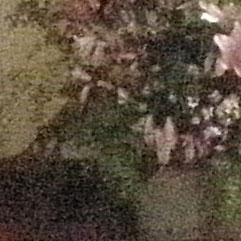 |
 | ||
1600 ISO |
1600 ISO |
1600 ISO | ||
 |
 |
 | ||
3200 ISO |
3200 ISO not available |
3200 ISO (at 2 Megapixels) | ||
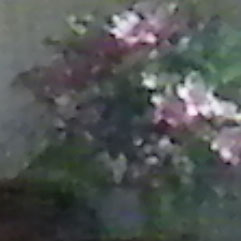 |
 |
 | ||
6400 ISO |
6400 ISO not available |
6400 ISO not available |
